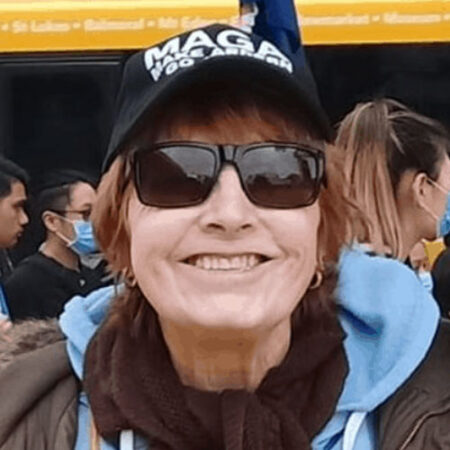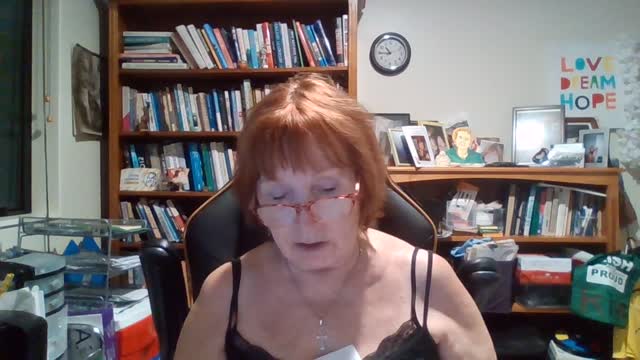TOO LATE TE WHATU ORA IT’S GONE GLOBAL….
Barry Young once again before the court yesterday 23rd February 2024. Pleading Not Guilty as he is accused by Apa of Te Whatu Ora of a data leak of personal info referencing that of 12,000 or more online. Barry is charged with dishonestly speaking out about Te Whatu Ora Health Agency Data online. Judge Warburton remanded Barry Young on Bail. As Barry Young said as he was leaving court “Truth Is Not A Crime’. The article in mainstream propaganda again call Barry and Liz conspiracy theorist as the Weaponizing of Health unfolds worldwide, more information is being exposed by expert professional and medical professionals worldwide. But Barry’s case is very significant as we have a smaller population, which is evidentiality of much use to those that are professionally medically exposing the truth worldwide. Therefore NZ is on the map in this instance. All eyes on NZ.
Te Whatu Ora reported this is a complex investigation, there is a collaboration between national and international experts. They are starting to contact every person effected by Barry’s Leak of information. They are working with online security experts nationally, internationally to monitor for signs of the exposure of data online HOW CONVENIENT
HOW CONVENIENT- COVER YOUR OWN ARSES.. RNZ Report 6/12/2022 cyber attack hits 1,000’s of coronial files and health records, investigation into digital security. Ministry of Justice and Whatu Ora hold IT Provider Mercury IT responsible. 14,500 Coroners files, 4,000 Post Mortem Files of who died between November 2018 and November 2022 HOW CONVENIENT NZrs personal information right across NZ breached. 20th November 2011 8,500 bereavements, care services file and 5,000 Cardias and Inherited Disease records cycler attacked. Privacy Commissioner notified 20/11/2022 HOW CONVENIENT
Ministry of Justice and Te Whatu Ora said “no evidence of any unauthorized access or downloading of files however Ministry Chief Operating Officer Carl Crafter said “this could not be ruled out, this is a possibility” He said We need to acknowledge this information is sensitive, six Regulatory Health Authorities have been hit. Te Whatu Ora responding “ We realize this is distressing”, and “we are working with cyber security experts to determine the full nature and extent of the impact of this incident”
Reference was made to a 2021 Waikato DHB report on Cyber attacks which said “ Te Whatu Ora needs to think like a hacker when building its security software”. In May 2021 ransomware cyber attacks brought DHBs, hospitals, services to a complete halt, as systems were worked on to be restored. Doctors had to work on whiteboards, and use hard copies for gathering information. 6th December 2022 1,000’s of coroners files, post mortem reports caught up in Ministry of Justice hack. Referencing 14,500 coroners files, 4000 post mortum reports nationwide of a sensitive personal information. Action was to be taken by National Cyber Security Centre, Privacy Commission, Police & CERT-NZ to investigate the extent of the incident which exposing that of Mercury IT that is commissioned to these DHBs etc., being at the heart of the cyber attack.
NZ Public were told to watch out for suspicious texts, emails unusual things happens, accounts, bank accounts etc.,
Stuff NZ reported 6/12/ 2022 Cyber Attack on external company Mercury IT. Bereavement files Cardio Arrest reports Middlemore Hospital access to 8500 bereavement files dating back to 2015. 5,500 records data dating back to 2011, disease data dating back to 2011 Auckland Wellington Tauranga and Nelson clinicians files. Mercury IT confirmed the cyber attacks in a statement dated 30/11/2022 that files had been effected nationwide. Mercury IT providing a wide range of IT Services to customers across NZ, governments, orgs, etc.,
16/12/2022 Te Whatu Ora hacked files before High Court. Te Whatu Ora and Health NZ cyber attacked files 14,500 coroners files, 4,000 other reports. Ransome ware cyber attack. References have been made a number of times that urgent work was required as to cyber security that cyber attacks were happening daily, saying this is an evolving situation. RNZ reported that DHBs were cyber attacked this is catastrophic for patient safety. Cyber attacks on high alert. Spokes person from Telehealth Leadership Group advising the Ministry that ‘phishing scams are efficient and ruthless. DHB Southern Region noticing cyber attacks over a period of 7 days.
NZ Herald May 18th 2021 NZ Hospitals battle daily cyber attacks. All DHBs across NZ face Cyber attacks in various forms (source Ministry Of Health) Cyber Attacks target COVID19 Pandemic HOW CONVENIENT WHEN INVESTIGATIONS, INQUIRIES, MASKING INFORMATION, MASKING THE TRUTH. NZ Parliament 29/6/2021 Speakers in the House discuss DHB Cyber Attacks referring to Ransome ware, the debate was declined because they wanted to discuss budget. Brooke Van Veldon speaker said “there is significant evidence that NZrs personal infor – data is on the dark web, this is a huge concern, ongoing incidences. People who are undergoing radiation therapy for cancer have had to travel beyonf their residential area to other areas in NZ to receive cancer treatment. Referenced also 400,000 NZrs could be affected, these are vulnerable people whom are already suffering from ongoing serious harm.
Investigations have shown that DHBs lack vital IT Infrastructure, network security is outdated inadequate and this has increased cyber security attacks, there are serious security issues, therefore patient private data is never safe, and has not been without risk. HOW CONVENIENT. 30th May 2023 Ministry of Health referenced a report that DHB Computer systems seriously need an upgrade, government failed to follow through. Andrew Little confirmed what Brooke Van Veldon had said as to her serious concerns as to cyber attacks, saying “patients information is accessible to others worldwide We have known that for some time”. Melissa Lee saying that Cyber Attackers go for weaknesses.
Parliament 2019 discussed cyber attacks in NZ the need for upgrading inadequate data IT Security Systems. Stuff NZ reported 27/5/2021 Privacy Commission warned DHBs to address security failings. December 18th 2023 Lisa Fong speech as 2023 NZITF Conference spoke about the NZ Internet Task Force referencing the November 2023 Cyber Threat Report- Domestic and International. Linking more domestic incidents to financially motivated crims and the growing effective malicious cyber tools, vulnerabilities the public are facing, infrastructure is made easier for cyber attackers to work at scale, sophistication causing national harm. And the need to improve NZ Cyber Security System Framework, saying she was getting expert advice from across NZ. IN OTHER WORDS THE GOVERNMENT HAD NOT GOT THEIR SHITE TOGETHER LEFT THOUSANDS UPON THOUSANDS OF NZRS EXPOSED TO THE DARK WEB , CRIMS THAT UTILIZE CYBER ATTACKS USING THEIR PRIVATE INFORMATION.
Stuff NZ 23/2/2024 Accused former Public Servant calls on other would-be whistleblowers. Barry accused of stealing large amounts of health data. Wellington District Court Barry was charged with ‘dishonestly accessing databases belonging to his former employer Health NZ-Te Whatu Ora. Barry said “I urge anyone in the Police, anyone in the services who have access to information that needs to come out, please, please do the right thing and end this”. Te Whatu Ora is accusing Barry of leaking 12,000 of peoples personal information as a result of a data breach. HOW COVENIENT. HOW MANY DATA BREACHES IS TO WHATU ORA, GOVERNMENT AND OTHER ORGANIZATIONS ARE RESPONSIBLE FOR. AND YOU SEVERELY ATTACK THIS COURAGEOUS MAN. HOW CONVENIENT.
THE PRIVACY COMMISSION ANNOUNCED “ Organizations, Government Agencies “Personal data pertaining to New Zealanders, those agencies, orgs, are responsible in protecting information, keep it safe from cyber attacks, cyber threats under the Privacy Act. A failure to do so is a breach of the Privacy Act. They must put things right to protect NZrs personal information, keep it safe from cyber attacks. There is no room for any organizations, govt agencies to be complacent in protecting New Zealand private information held in their data systems. TRUST IS HARD WON… EASILY LOST’
HOW CONVENIENT, PROTECTING THE BACKS OF THOSE THAT DID LEAK THOUSANDS OF DATA FILES, NZRS PRIVATE INFO, HEALTH RECORDS, BEREAVEMENT RECORDS, POST MORTUM, CLINICAL CARDIO… JUST TARGET BARRY YOUNG FOR ALL THOSE INJUSTICES, SERIOUS HARMS THE GOVERNMENT HAS DONE TO VUNERABLE NEW ZEALANDERS.
https://www.ncsc.govt.nz/news/looking-to-the-future/
...





